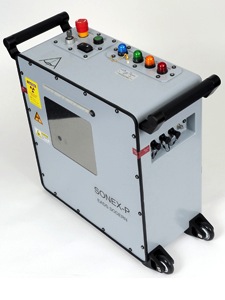How vulnerable is America’s power grid to a planned assault?
An attack that took place last April on a PG&E (PCG) electrical substation outside of San Jose, Calif., was originally called an act of vandalism in some news reports, although at least one local law enforcement official felt the crime was intentional.
“If you want to call that sabotage, that’s what it looks like,” Santa Clara County Sheriff Laurie Smith said at the time.
No arrests have been made in the incident, which caused power to be briefly re-routed from the damaged facility. But it’s been clear for some time that the late-night attack – which involved the assailant or assailants cutting several major telecommunication cables and then shooting up the substation’s massive transformers with at least one high-powered rifle – was deliberate.
New media reports, meanwhile, are describing an even darker scenario, with some experts characterizing the crime as a terrorist assault on the nation’s power grid.
The physical and economic vulnerabilities of the grid have been known for some time. Industry and government officials have focused in recent years on the possibility of a cyberattack disrupting or crippling America’s power system.
Other experts also are considering the what-ifs of a physical, violent attack. That possible chain of events was the topic of a wide-ranging report, titled Terrorism and the Electric Power Delivery System, completed in 2007 by experts at the National Research Council (NRC). Soon after its completion, however, the report was ordered classified by the Department of Homeland Security. It was finally released to the public in 2012.
The NRC report is startling, especially in light of the California incident. It notes the nation’s electrical delivery system “could be severely damaged by a small number of well-informed attackers.” And while such an attack wouldn’t necessarily be as sensational or dramatic as the terror attacks in New York, London and Madrid in recent years, it could deny large parts of the U.S. “access to bulk system power for weeks or even months.”
More chilling, according to the report, is the human toll such an assault could have during times of extreme weather. Extended power outages during those conditions, it says, “could… result in hundreds or even thousands of deaths due to heat stress or extended exposure to extreme cold.”
And then there’s the economic impact. In August of 2003, a power line in Ohio that brushed against some trees caused what’s been called the biggest blackout in North American history. That power outage affected 50 million people in the Northeast for up to two days, at an estimated cost of $6 billion dollars. But “a systematically designed and executed terrorist attack,” according to the NRC report, could cause disruptions that would make the 2003 blackout pale in comparison.
“It is no stretch of the imagination to think that such attacks could entail costs of hundreds of billions of dollars,” the report continues.
A big part of the problems, according to experts, is the nation’s antiquated and overtaxed power system.
“The United States is poor in infrastructure replacement,”said Jack Strauss, an economist at the University of Denver’s Daniels College of Business.
Strauss points to a 2013 annual report by the American Society of Civil Engineersthat gives the nation’s infrastructure a D+ grade.
One of the issues stems from the deregulation of the country’s electric utility industry, a trend that began in the 1990s.
“Deregulation, which is a good idea, encourages competition.” Strauss noted, “but at the same time… there’s less investment in the short run. So we’re not making the right investments.” That includes investing in emergency back-up generators and transformers, as recommended in the NRC report.
The report also focuses on measures that, if adopted, could make the national power grid less vulnerable to attack, while also protecting critical services during a major power disruption, as well as developing ways to quickly restore electricity after such incidents.
As Strauss points out, however, the NRC report came out just as the recession deepened and America’s focus shifted to economic recovery, so it’s uncertain how many of those recommendations have actually been adopted.
CBS Interactive Inc.. ByBRUCE KENNEDY


